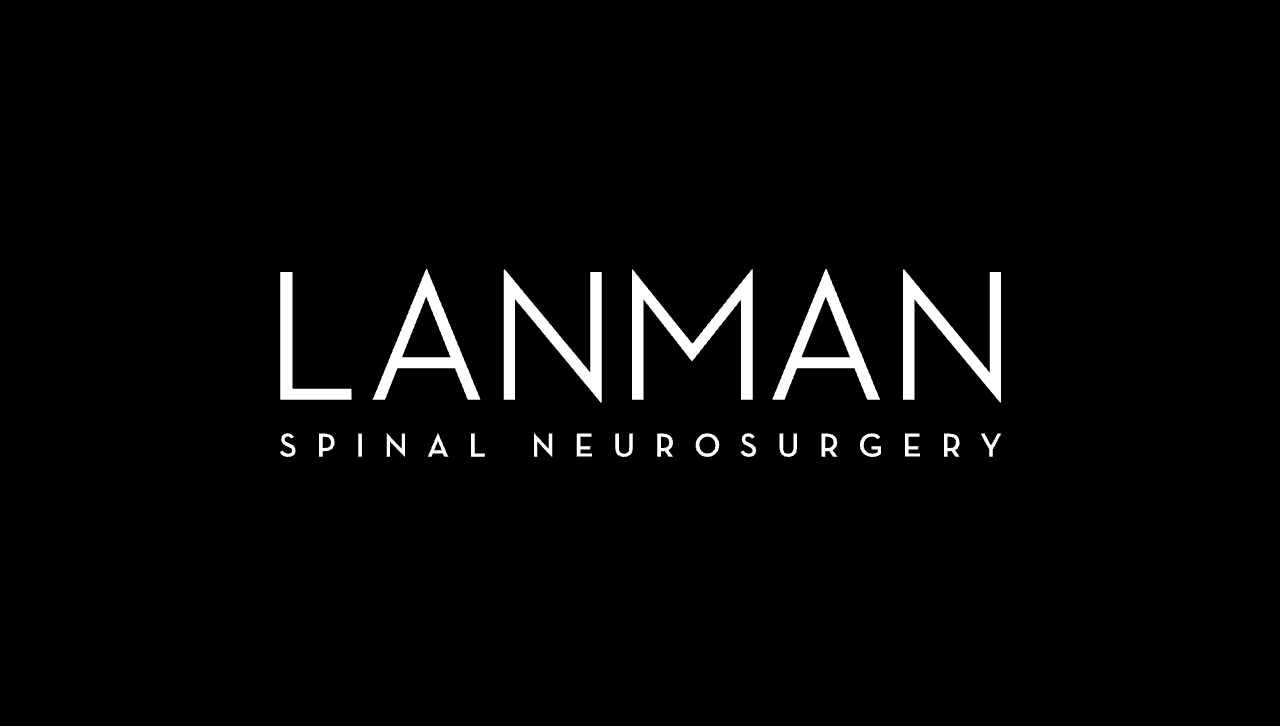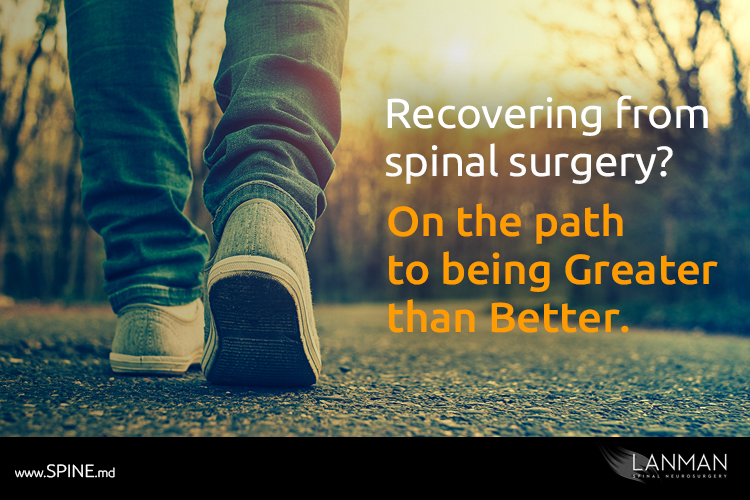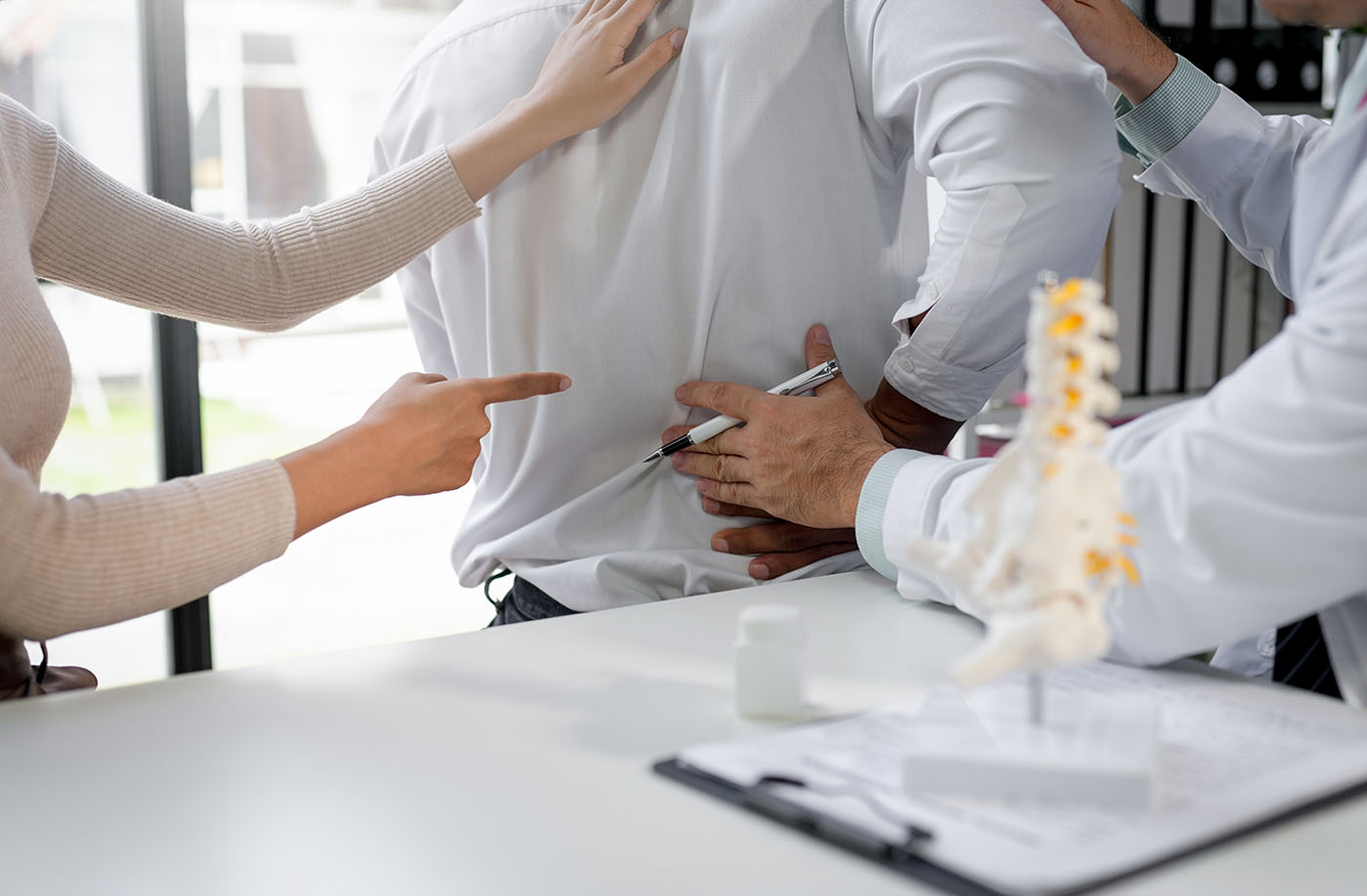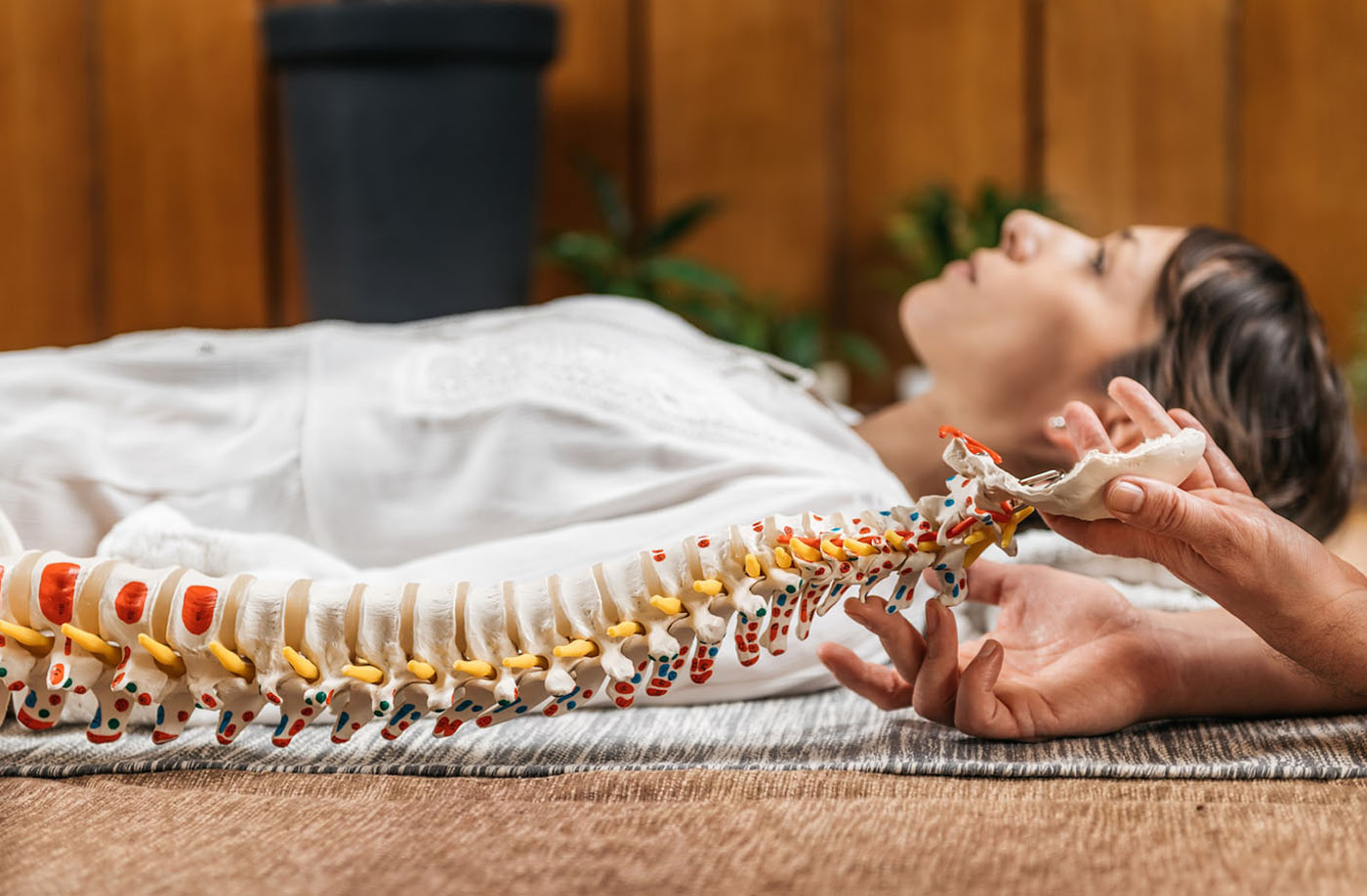Your role in your recovery, on the path to being “greater than better.”
I congratulate you on reading this article because it means you’re taking your post-operative recovery from spinal surgery seriously. In my experience, patients who end up with the best outcomes are often the ones who spend a great deal of time understanding every step of their treatment. I encourage patients to read and learn about the personal effort that’s needed to strengthen the therapeutic value of the procedure.
Consider the effort it took for you to act when you recognized a problem with your spine, like chronic pain in your neck or lower back. Then you sought the consultation of a physician, worked with a surgeon for a solution, and now you’re on the path for healing. The very best you can do is continue your care by following prescribed advice through your entire post-operative term. And that means follow-through with every step – not just until you start to feel better.
Keep in mind that depending on the surgical procedure, full recovery can take months to even a year. That’s why acting by your doctor’s instructions is so important, especially after you start to feel better. The discomfort from the procedure is gone, the source of pain is gone, and that’s when compliance often slips away.
For patients I see at my private practice in Beverly Hills, CA: half of the outcome from spine surgery is from my work as a surgeon. The other half is what the patient is willing to do. What that means is that you don’t look for short cuts and you don’t cut back on what you do in your recovery.
Full compliance speeds recovery. It also ensures that your body has all the resources it needs to repair and recover for the entire term of healing. For example, I’ll recommend post-operative rehabilitation programs that include physical therapy and personal exercises like stretching, strengthening, and conditioning. Through my own experience as a spine surgery patient, this is what makes the difference for successful spine surgery. Some of my patients complain a little, but most are happy to comply, and they are thankful that they do when they see the results.
Over the years, definitive research shows just how full patient participation can have on the outcome of any surgical procedure — even very minor ones. That’s why I give my patients enough information so they can visualize how each step contributes to their healing process.
The more invasive the procedure, the more diligent the patient must be. There is also a direct correlation between post-operative recovery time and the length of time that a patient lived with the condition that led to the surgery. For instance, if a patient endured lower back pain for many years from disc degeneration, the recovery time could take longer than a patient who lived with the condition for a shorter duration.
After spine surgery, careful follow-up is also crucial. In most cases, I will recommend continuation of non-surgical rehabilitation over additional surgery to resolve ongoing discomfort. Of course, there are exceptions if there is a further disc herniation or another failure. If any of my patients have recovery pain beyond what is expected, what I recommend for follow-up is completely individualized to the patient’s particular problem or situation.
Some problems can be anticipated. For example, if you are a spinal fusion surgical patient, and you continue to experience post-operative pain, I may order a CAT scan three months postoperatively to assess the healing process. We may find that a bone graft has not healed as expected. There could be other issues with the fusion hardware. Adjacent discs may have failed due to the structural changes in the spine from previous fusions.
Artificial disc replacement surgery has been clinically shown not to produce as many post-operative problems for patients. Moreover, the recovery time is condensed. Instead of about three months postop recovery for spinal fusion, we can reduce recovery for ADR patients to within just about three weeks.
There is no surprise that patients do not feel that the back surgery was successful until they achieve complete and full recovery (i.e., without pain or discomfort). As a patient of many of the procedures I prescribe for my patients, it’s completely normal to feel a little anxious if recovery is not as fast as we hope. Some patients may experience some ‘recovery fatigue’ where they start to cut corners. But I cannot urge more that patients must be patient!
Remember that you are not the first nor the only patient to have these experiences. Recovery is a partnership with your surgeon. I want what you want, and I definitely want you to be greater than better.








